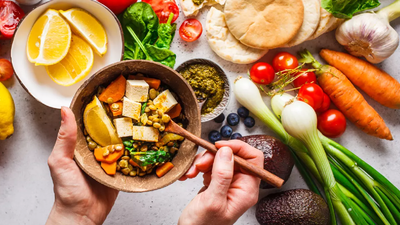ARTICLE AD BOX

LUCKNOW: Do you know that you can check adulteration in food at home? According to experts at Food Safety and Standards Authority of India (FSSAI), you can check food adulteration by following simple steps.
According to Vijay Pratap Singh, assistant commissioner of food safety, Lucknow, consumers should check the label before purchasing any packaged food product. “Key details to verify include the 14-digit FSSAI licence number, lot or batch number, manufacturing date, expiry date and the list of ingredients. If consumers wish to file a complaint, they may contact oll-free number 1800-180-5533,” he said.
Tips to check adulteration
Milk | Take a clean glass plate and slowly pour 1-2 ml of milk vertically on it. If the drop moves slowly leaving a white trail that means milk is pure, but if the drop flows rapidly, it means it has been adulterated with waterGreen vegetables | Take a small quantity of green vegetables and a piece of moistened white blotting paper. Keep green vegetables on white blotting paper. No colour change will be seen with unadulterated vegetables, but if the paper gives an impression of green colour, it means vegetables are adulteratedTurmeric | Take a small quantity of turmeric whole in a glass of water. There is no colour change when unadulterated, but if water turns bright yellow, it means adulteration with lead chromateTea leaves | Tea leaves are often adulterated with iron filings. To test it, put tea leaves on a glass plate and move a magnet through it. Ma gnet moved on unadulterated tea has no iron filingsGhee | Take 1/2 teaspoon of ghee in a transparent glass bowl. Add 2-3 drops of iodine solution to the ghee. No colour change will be observed in unadulterated ghee, but if it turns blue, it may be adulterated with mashed or sweet potatoesButter | Take some water in a transparent glass bowl. Add 1/2 teaspoon of butter and 2-3 drops of iodine solids. No colour change will be observed in the solution with unadulterated butter. Solution with starch adulterated butter will turn blueFood grains | Take a glass of water, add two teaspoons of food grains. Water with unadulterated grains won’t change colourOil | Take 2ml of oil in a transparent container and add a little butter in it. The unadulterated oil remains unchanged but changes to red if it is adulteratedRed chilli powder | Take a glass of water and sprinkle some chilli powder. The unadulterated chilli powder stays on the surface for some time and gradually settles down without leaving any colour streaks. Adulterated powder with artificial colour will leave streaks behindCinnamon | Take small quantity of cinnamon on glass plate. Closely examine the bark. Unadulterated cinnamon is thin and can be rolled around a pencil with a distinct smell. The adulterated cinnamon comprises several layers in between the rough outer and innermost smooth layersCoffee powder | Take a glass of water, add half a teaspoon of coffee in the glass and wait for 5 min. The unadulterated coffee will have no sediments at the bottom of the glass. The adulterated coffee will have clay sediments at the bottom of the glassSalt | Take some water in a glass, add salt and stir it well. Unadulterated salt dissolves completely in water. Salt adulterated with chalk makes water slightly white and some impurities are visible at the bottom of the glassSugar | Take a glass of water, add 10 gm of sugar and stir it well. Unadulterated sugar dissolves completely with no sediments. Adulteration with chalk leaves impurities(Source: Food Safety and Standards Authority of India)
Get the latest lifestyle updates on Times of India, along with Eid wishes, messages, and quotes !



.png)
.png)
.png)
















 7 hours ago
3
7 hours ago
3









 English (US) ·
English (US) ·